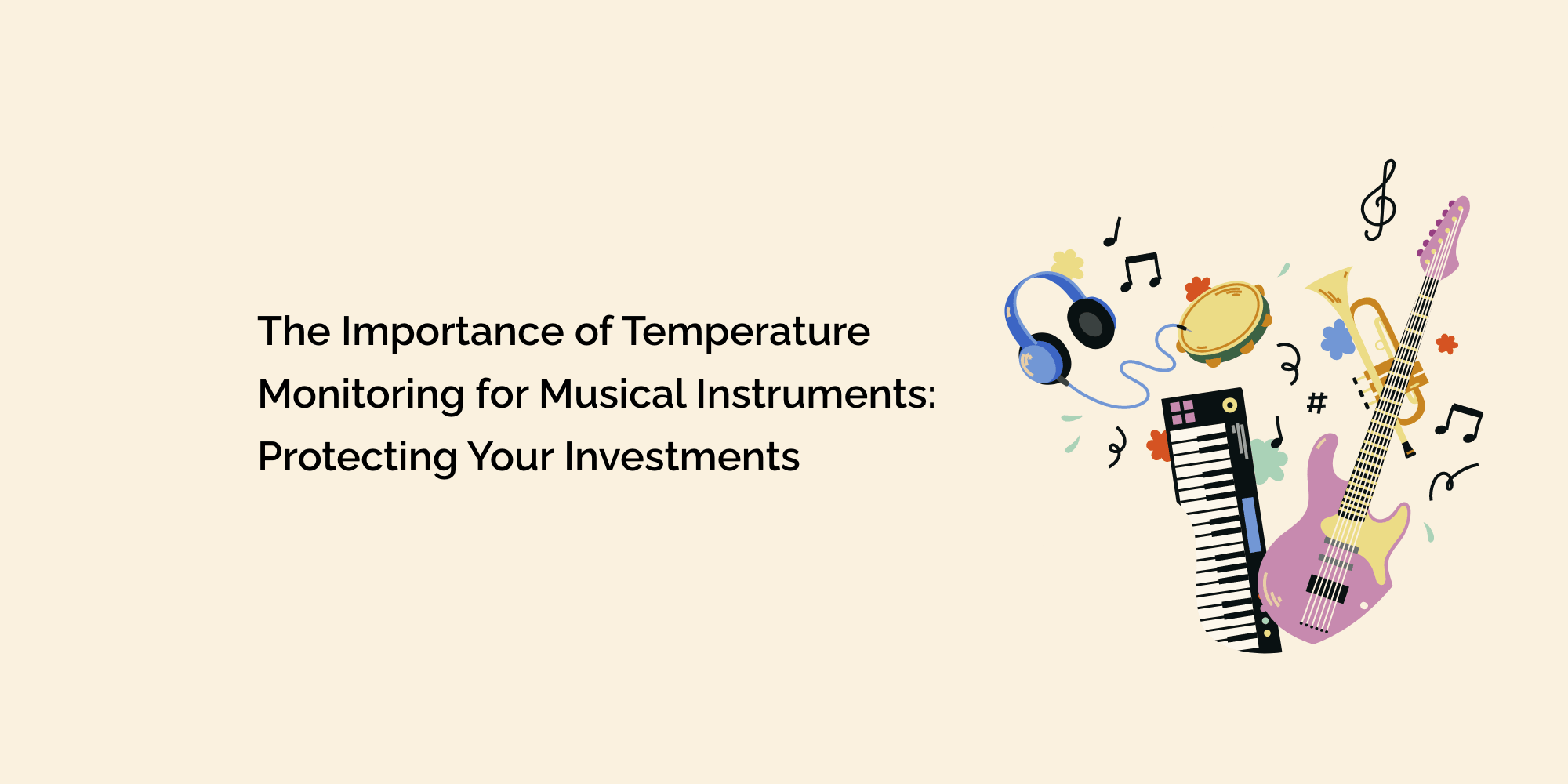Musical instruments are not just objects but investments with sentimental and financial value. Temperature monitoring is crucial to ensure these precious instruments' longevity and performance. Temperature fluctuations can harm instruments, causing damage, compromising sound quality, and decreasing their value. This comprehensive blog will explore the importance of temperature monitoring for musical instruments. We will delve into the impact of temperature on various instrument types, discuss the risks associated with temperature fluctuations, and provide practical tips on implementing effective temperature monitoring. By understanding the significance of temperature control and taking proactive measures, you can protect your musical investments and enjoy their beauty and functionality for years.
The Relationship Between Temperature and Musical Instruments
Temperature plays a significant role in the well-being of musical instruments. Different instrument types, such as woodwinds, strings, brass, and pianos, have unique vulnerabilities to temperature fluctuations. Understanding the impact of temperature on each instrument category helps us appreciate the need for temperature monitoring.
The Risks of Temperature Fluctuations
Temperature fluctuations pose risks to musical instruments. Structural damage, such as warping, cracks, or joint failures, can occur due to the expansion and contraction of instrument materials. Tonal changes and performance degradation are also expected consequences of temperature instability.
The Role of Temperature Monitoring in Instrument Preservation
Temperature monitoring is a proactive approach to prevent temperature-related damage to musical instruments. By monitoring temperature levels, musicians and instrument caretakers can maintain stable conditions, identify potential risks, and take preventive actions to preserve the instruments' value and longevity.
Implementing Effective Temperature Monitoring
Choosing the proper temperature monitoring devices is crucial for accurate readings. Traditional thermometers, digital temperature sensors, data loggers, and wireless monitoring systems offer varying features and capabilities. Proper placement of temperature sensors in critical areas ensures accurate and reliable temperature monitoring.
Ideal Temperature Ranges for Instrument Storage and Display
General guidelines suggest maintaining a stable temperature between 18°C and 24°C (64°F to 75°F) for instrument storage and display. However, specific instrument categories may have unique temperature requirements. Understanding these temperature ranges helps maintain optimal conditions for different instruments.
Monitoring Humidity Levels Alongside Temperature
Humidity levels are closely linked to temperature and can affect instrument materials. Monitoring humidity alongside temperature provides a comprehensive approach to instrument care. Balancing humidity levels within the recommended range helps prevent wood swelling or drying out.
Creating a Stable Environment for Instrument Storage
Insulation and climate control solutions create a stable environment for instrument storage. Proper insulation prevents temperature fluctuations caused by external factors. Climate control systems, such as HVAC or dehumidifiers, help regulate temperature and humidity levels in instrument storage spaces.
Tips for Traveling with Musical Instruments
Traveling with musical instruments requires special attention to temperature control. Portable temperature monitoring solutions, such as compact data loggers or thermometers, can be used during transportation. Taking precautions, such as avoiding extreme temperature conditions and using protective cases, minimizes the risk of temperature-related damage.
Educating Musicians on Temperature Monitoring
Raising awareness about temperature monitoring and its importance is crucial for musicians. Educating musicians on temperature control practices, risks of temperature fluctuations, and proper instrument care enhances their understanding and commitment to preserving their instruments.
Collaborating with Temperature Experts and Professionals
Collaborating with instrument technicians, temperature experts, and professionals in temperature control ensures access to valuable advice and expertise. Seeking guidance on instrument storage spaces, temperature monitoring technologies, and best practices further enhances instrument preservation efforts.
The Long-Term Benefits of Temperature Monitoring
Implementing temperature monitoring practices brings long-term benefits to musicians and instrument caretakers. Preserving sound quality and performance ensures instruments deliver their intended tonal characteristics. Safeguarding financial and emotional investments by maintaining instrument value enhances musical instruments' enjoyment and appreciation.
Certainly! Here are some frequently asked questions (FAQs) about temperature monitoring for musical instruments:
Where should temperature sensors be placed for accurate readings?
Temperature sensors should be strategically placed in critical areas, such as instrument storage rooms, cases, or performance spaces. They should be positioned away from direct sunlight, heat sources, or drafts that could affect the accuracy of the readings. Placing sensors near instruments provides more accurate temperature data.
How often should temperature monitoring devices be calibrated?
Regular calibration is necessary to ensure the accuracy of temperature monitoring devices. The calibration frequency depends on the specific device and the manufacturer's recommendations. It is essential to follow the provided guidelines to maintain the accuracy of the temperature monitoring equipment.
What are the benefits of real-time monitoring and alerts?
Real-time monitoring provides continuous temperature tracking, allowing users to detect temperature fluctuations as they occur. Real-time alerts notify users immediately when temperature deviations exceed the desired range, enabling prompt action to rectify the situation and prevent potential damage to instruments.
Conclusion
Temperature monitoring plays a vital role in protecting musical investments. By understanding the impact of temperature fluctuations on different instrument types, implementing effective temperature monitoring practices, and creating stable environments for instrument storage and display, musicians can preserve their instruments' longevity, value, and performance. Educating musicians, collaborating with temperature experts, and embracing temperature monitoring as an integral part of instrument care further strengthens the preservation efforts.








